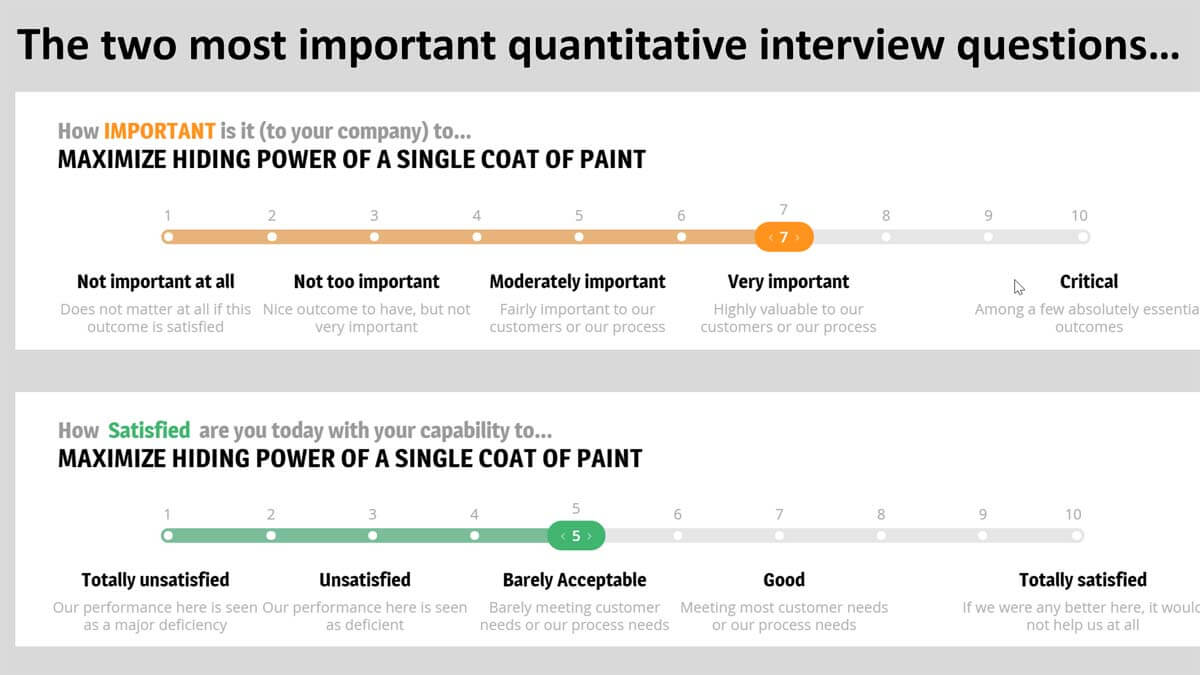I think the biggest mistake is failing to use quantitative customer interviews. Why use quantitative questions for interviews, not just qualitative? Two reasons. First, qualitative interviews give you reams of customer quotes with no good way to prioritize customer needs. Sure, you could count the number of times customers cite a need, but frequency of remarks is a poor substitute for customer eagerness to improve.
More important, with only qualitative interviews you’ll succumb to confirmation bias… the tendency to hear and interpret information according to your preconceived notions. With quantitative questions for interviews, you’ll have hard data on customer needs that your team hasn’t filtered or skewed. You get 100% unadulterated insight straight from the customer.
More in 2-minute video, Quantitative interviews are a must
We researched this question with a survey of 300+ B2B professionals, examining these VOC skills: 1) Secure interviews, 2) Proper interviews, 3) Impress customers, 4) Uncover all needs, 5) Probe for meaning, 6) Probe for value, 7) Quantitative VOC, 8) Virtual VOC, 9) VOC debriefing, 10) Prioritize needs, 11) Segment market, and 12) Business case.
Can you guess which skill most differentiated the winners and losers in terms of new product development success? It was #10, Prioritize customer needs. The #2 skill wasn’t even close. So if you’re not conducting quantitative interviews to prioritize customer needs with confidence, you’ve got some serious “upside” to pursue. See 2-minute video, Quantitative interviews are a must.
More in white paper, Market Satisfaction Gaps.
If you conduct the right kind of B2B quantitative interviews, you don’t need to show customers a prototype to see if they’ll like it. You’ll already know what they want if you use the methods in this 2-minute video: Benchmark Competing Alternatives. However… prototypes can still be helpful to a) further engage customers, b) understand the value your new product delivers, and c) make refinements. But if you’re serving a B2B market, you can stop lobbing prototypes to understand what customers want.
More in article, Predict the customer’s experience with modeling



